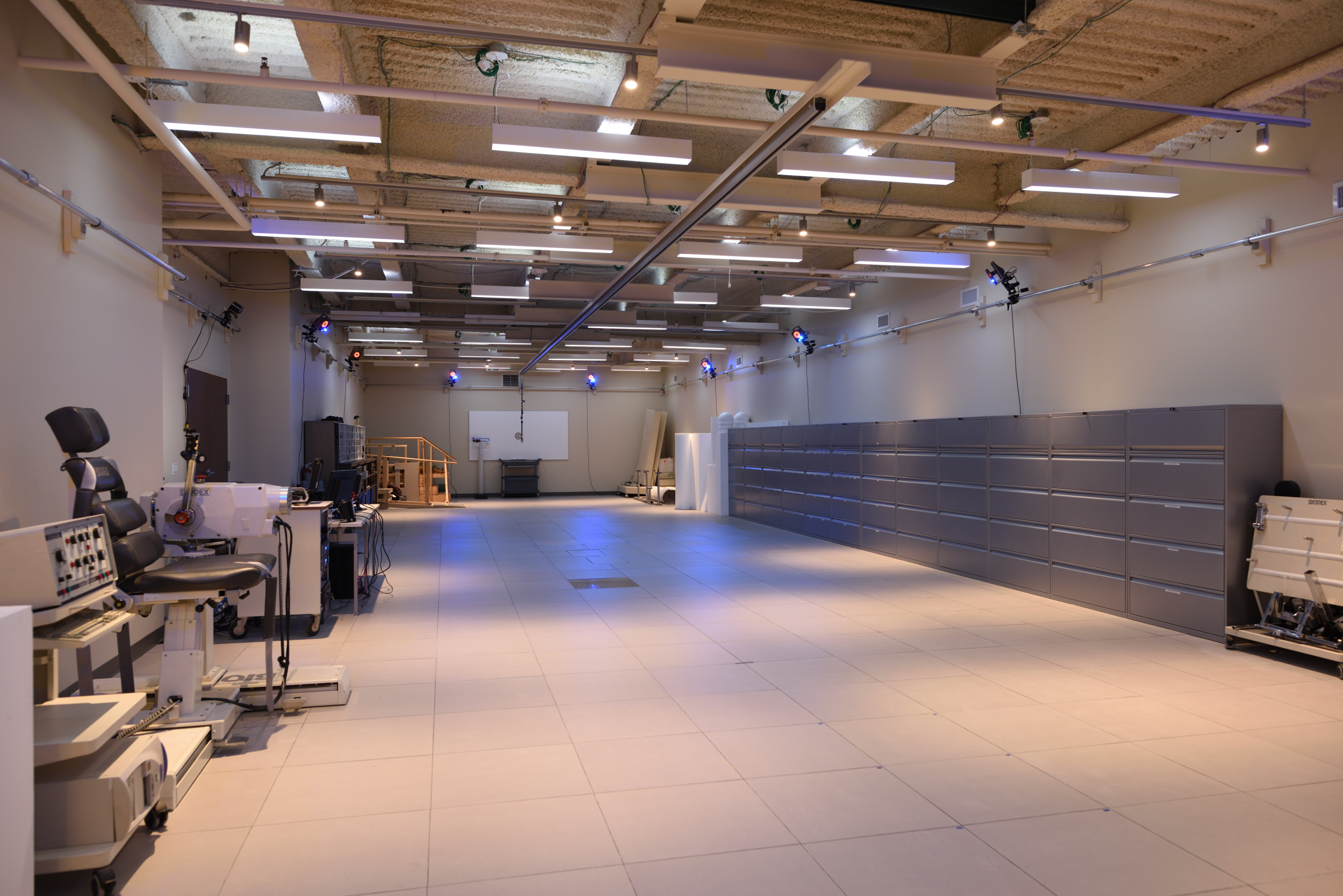
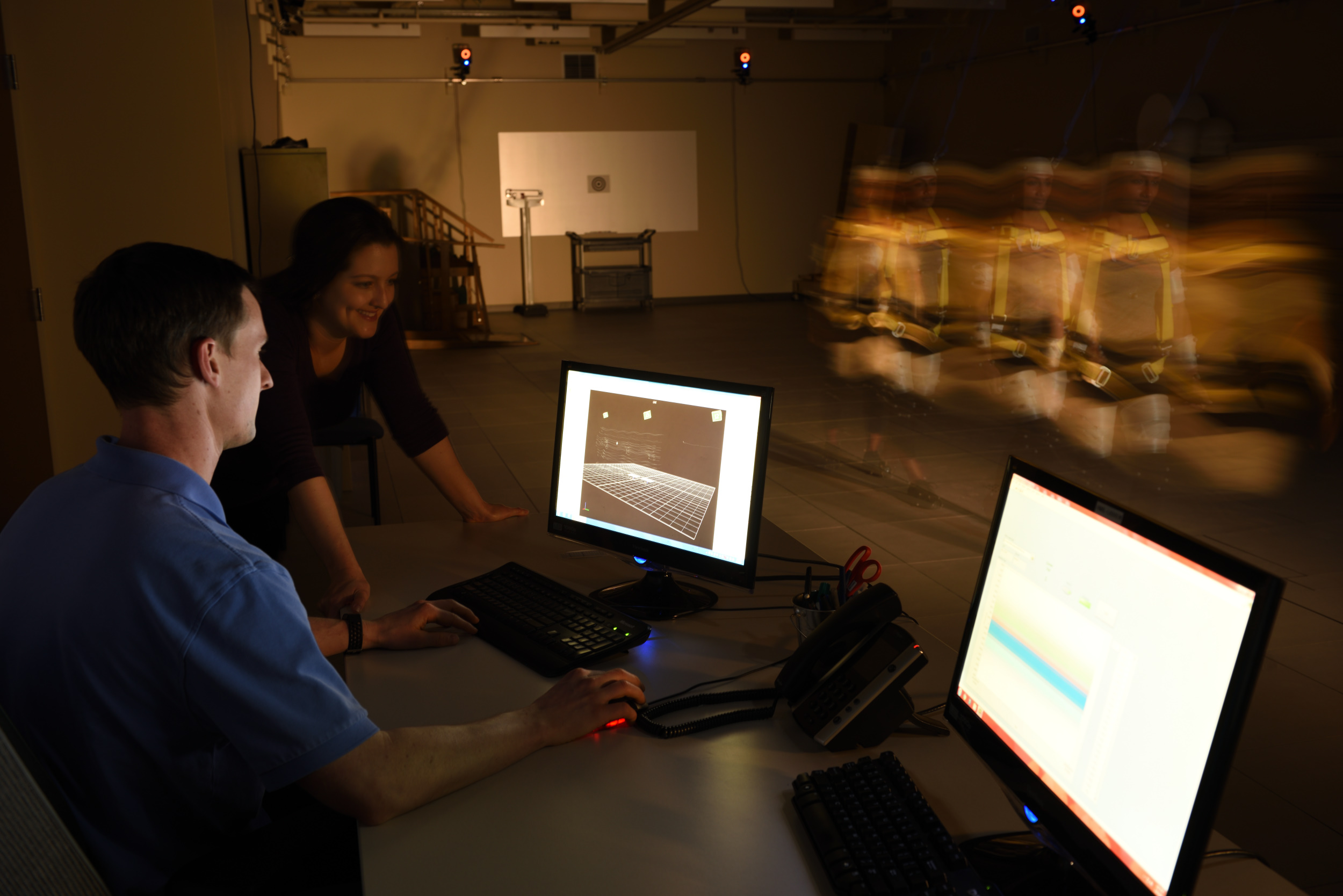
The Motion Capture Laboratory is a biomechanics facility specifically designed to conduct locomotion studies related to movement and postural control. In addition to large-scale movements such as walking and standing, the motion capture system is also capable of recording small-scale movements such as hand and finger motions during precision tasks (e.g. typing or object sorting). Three-dimensional motion and ground reaction forces, as well as electromyography data, can be collected during walking or other tasks. Additionally, analysis can be performed on more specific aspects of a task such as stopping, turning, and multitasking. Motion data is synchronized with ground reaction forces and other biomechanical signals such as electromyography. Thus, the motion capture facility enables measurement and synthesis of the necessary gait variables required to provide a thorough description of whole-body biomechanics. Our 18-meter laminate walkway is equipped with a 14-camera motion capture system (Vicon Motion Systems Ltd.), 2 force plates (Bertec Corporation), digital video cameras, and an overhead safety harness system (Solo-Step, Inc.). Motion capture can be performed on a level walkway, uneven walkway, ramp, uneven ramp, stairs, or ladder, and it is also possible to elicit perturbations such as slips, stumbles, and trips during walking trials. The lab is also equipped with a 56-channel electromyography and accelerometer system (Delsys, Inc.), as well as a dynamometer (Biodex Medical Systems, Inc.). The dynamometer can be used for measuring torque generated by different muscle groups during isometric, isokinetic, and isotonic contraction. Custom equipment such as shoe-floor fluid pressure sensors, accelerometers, and frustrated total internal refraction are designed, fabricated and integrated with the lab equipment to foster biomechanical innovations.
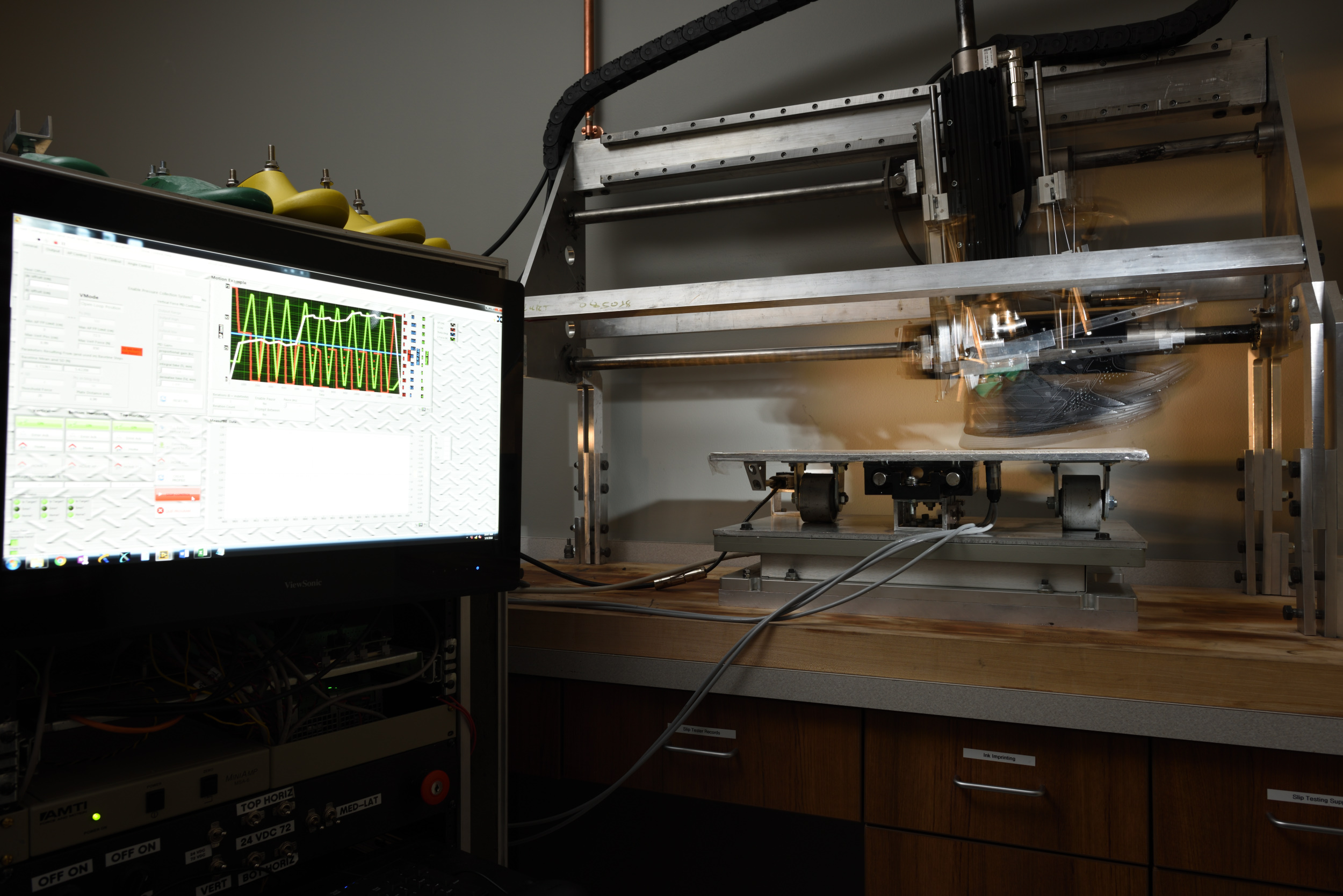
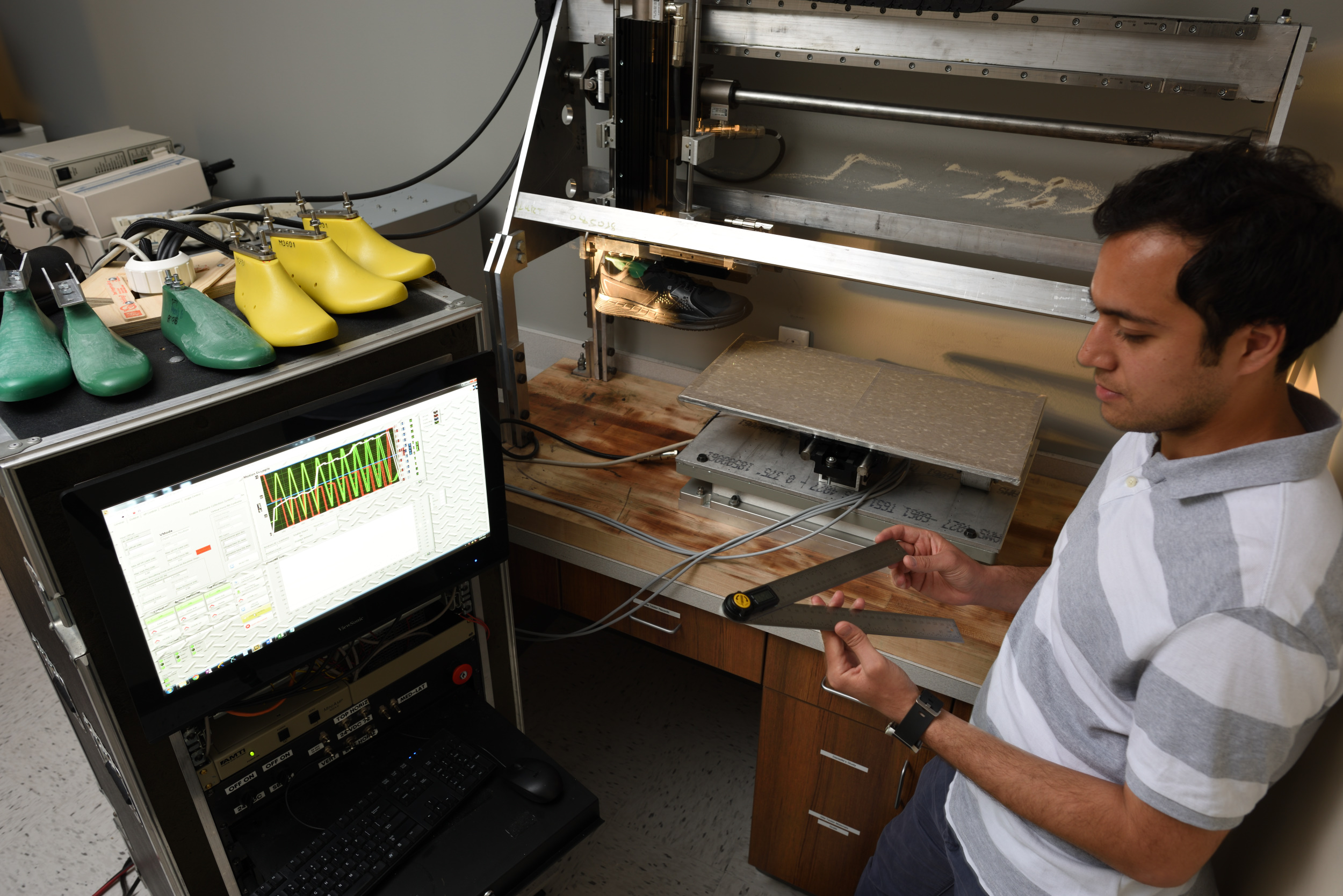
The Tribology Laboratory is equipped with devices used for measuring the traction performance, wear, and physical properties of contacting materials. This laboratory specializes in studying shoe-floor friction related to slip and fall accidents. The facility includes two slip testing devices – a Robotic Slip Tester and a Portable Slip Simulator – which slide shoes across floor surfaces under controlled conditions intended to simulate slipping in a real-world setting. Force plates and fluid pressure sensors are used to assess traction performance and the mechanistic pathways that influence performance, respectively. The tribology laboratory houses a simulated wear apparatus for wearing down shoes in a biofidelic manner, a pin-on-disk testing apparatus, several material property measurement devices (durometer, profilometer, and viscometer), and instruments for making silicone rubber molds.
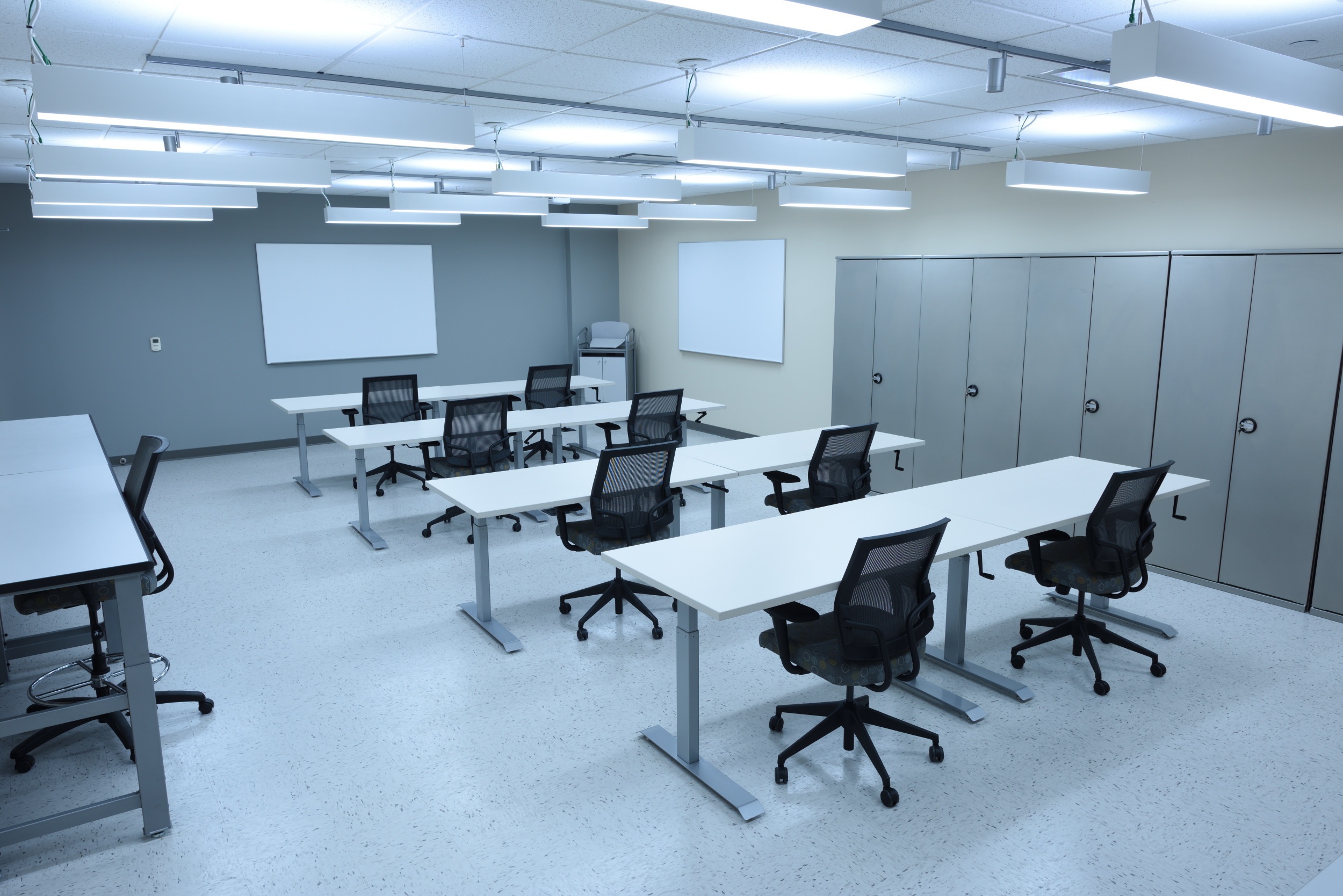
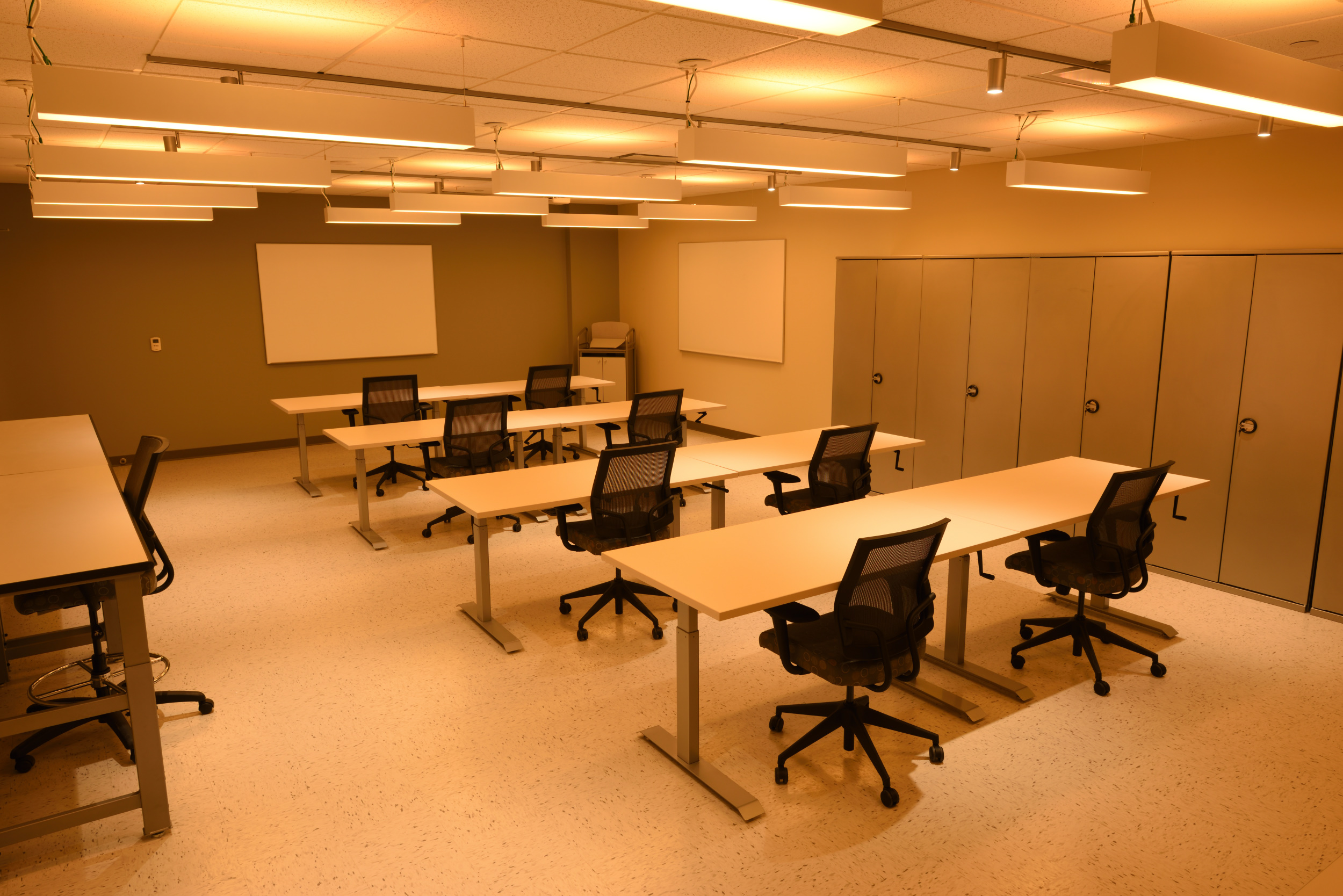
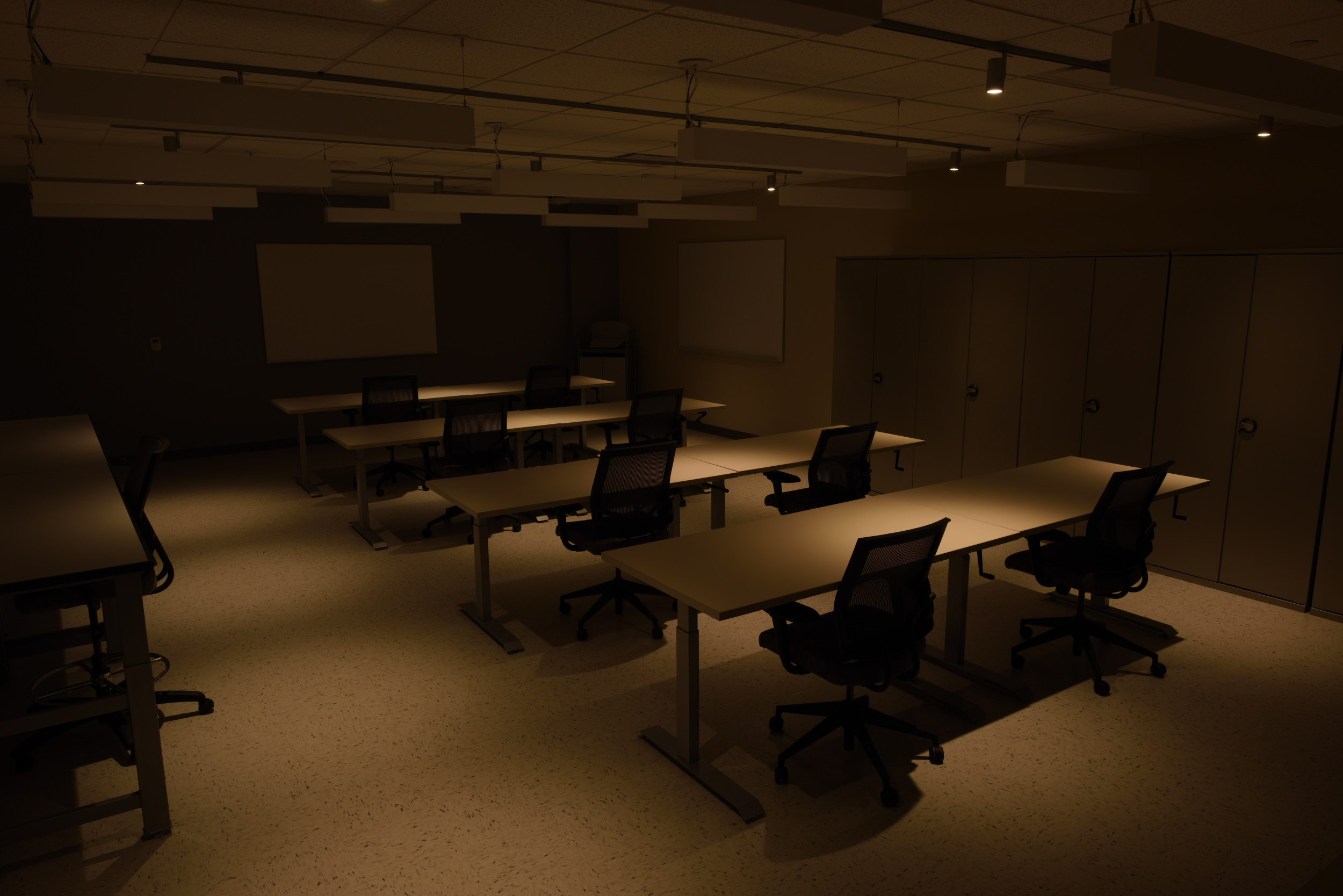
The Human Factors Laboratory was developed with the goal of applying the human factors and ergonomics approach to occupational environments and medical devices. This facility is currently equipped with ergonomic workstations and standing desks, including adjustable chairs and tables. Additionally, the human factors laboratory is capable of analyzing the effects of varying lighting conditions on subject performance in different tasks. The lighting in the laboratory can be varied by temperature (cool/warm lighting) as well as brightness (dim/well-lit).
One immediate goal is that the human factors laboratory will house the Low Vision Center for the Advancement of Independence (LoV-CAI). The goals of the LoV-CAI, for which it is intended that the facility will be fully established and equipped, are threefold: 1) Evaluate the needs of patients with low vision conditions, 2) Evaluate current interventions and assistive technologies used to treat patients with low vision conditions, and 3) Develop new and innovative solutions to meet the needs of low vision patient